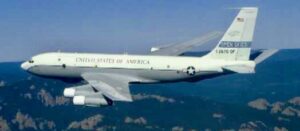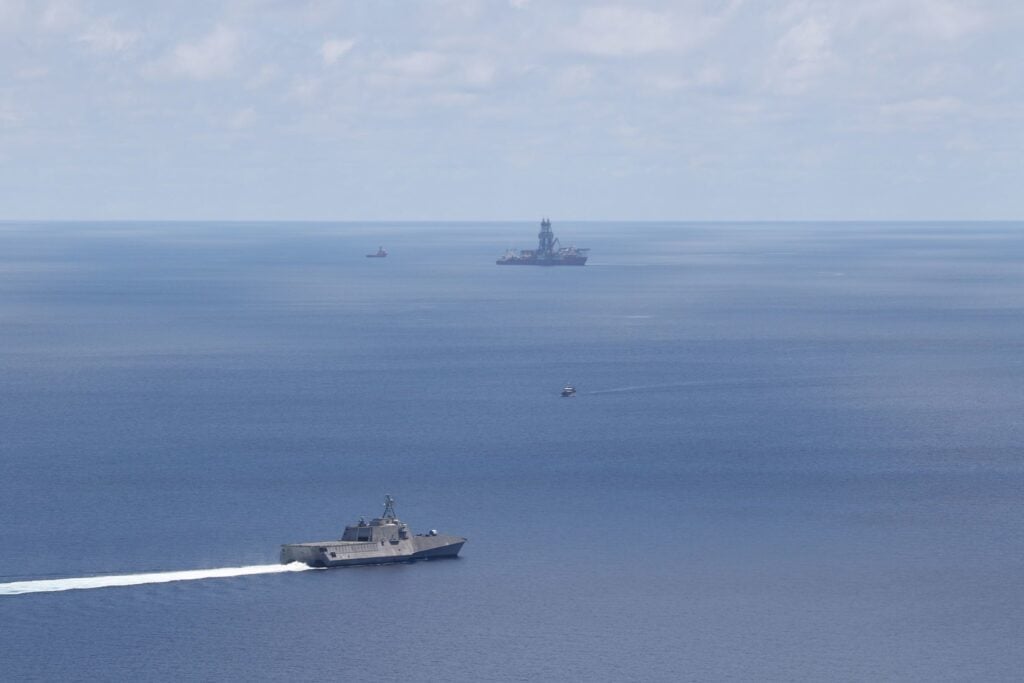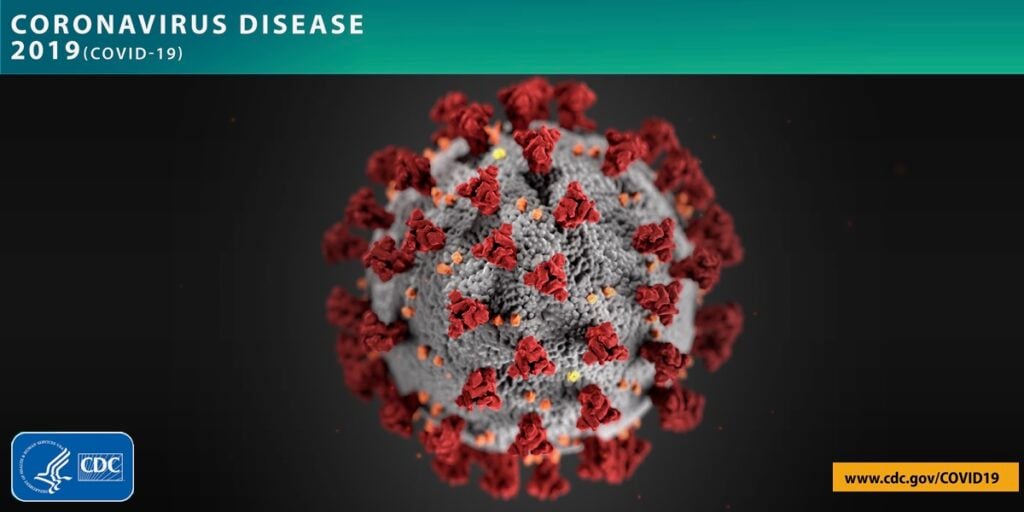For a brief moment it seemed that the worst global pandemic in a century might lead to increased comity between the United States, China and Russia after years of geopolitical eye-gouging. As the virus spread there were early signs of a pause in the escalating cycle of military brinksmanship, cyberattacks, disinformation campaigns and trade wars that has badly shaken the rules-based international order in this era of great power competition.
Beijing seemed to initially embrace a spirit of cooperation when it donated protective gear and testing equipment to hard hit countries in Europe. President Trump for months was uncharacteristically effusive in his praise of Chinese President Xi Jinping’s efforts to combat the virus. Russian President Vladimir Putin got into the soft power act in early April when he dispatched an An-124 military transport to New York filled with donated masks and ventilators. (Of course, you can also argue it was a highly effective information operation designed to undermine U.S. standing in the world.)
That moment was short lived.
“Unfortunately, this crisis is likely to unfold in three consecutive waves, with a public health crisis followed by an economic crisis, quite possibly followed by a security crisis,” said David Kilcullen, author of the recent book “The Dragons and Snakes: How the Rest Learned to Fight the West,” and a former special adviser to Gen. David Petraeus in Iraq, and the U.S. Secretary of State. The United States is already experiencing high levels of domestic unrest at a time of paralyzing partisan rancor, he noted, and the discord will certainly increase as the presidential election nears in November. Adding to that combustible mixture is likely to be a second wave of the virus expected to hit in the fall, and foreign actors like Russian and China determined to use disinformation to stoke domestic divisions during the election.
“Given the likelihood of internal instability and anti-government anger here and around the world, there will be a huge incentive for leaders who personalize politics like Trump, [Russian President Vladimir] Putin and [Chinese President] Xi Jinping to look for external scapegoats for their domestic troubles, which has already started to happen,” said Kilcullen. “This crisis also comes at a point when the international system that we’ve known since the end of World War II was already rotting and weaker than it appears. It may only take one big shock to bring that whole structure down, and, if we’re not very careful, the pandemic could be that shock. So this is the most dangerous geopolitical dynamic I have seen in my entire career.”

Chinese President Xi Jinping inspects PLA troops
As it became clear the Chinese Communist Party covered up the initial outbreak of the novel coronavirus in Wuhan, wasting precious time and allowing it to blossom into a global pandemic, Beijing launched a campaign of intimidation and economic threats to mute international criticism. Borrowing a page from Russian disinformation operations, Beijing posited the conspiracy theory that the virus originated with the U.S. military. Both China and Russia pushed alarmist narratives about the pandemic on social media to sow division and panic inside the United States. Much of the protective equipment Beijing “donated” to the West carried a price tag and turned out to be defective.
In his own campaign of blame shifting and heated rhetoric, President Donald Trump accused China of being responsible for an attack on the United States that “is worse that Pearl Harbor,” and “worse than the World Trade Center” that fell in the 9/11 terrorist attacks. Chinese incompetence in dealing with the virus, Trump tweeted this week, is responsible for “mass Worldwide killing!”
Today’s announcement of the administration’s “intent” to nominate Polakowski, a retired Army two-star general who worked on WMD issues throughout his career, comes the day after a senior Pentagon official acknowledged that the US could resume nuclear testing “relatively rapidly,” should the decision be made.
Trump darkly hinted in mid-April that he had information that a virology lab in Wuhan played an important role in the virus’ creation, even though the U.S. Intelligence Community consensus was that the virology lab in Wuhan had nothing to do the virus’ creation or origins.
Secretary of State Mike Pompeo insisted there is “enormous evidence” the coronavirus originated in that lab. “We greatly underestimated the degree to which Beijing is ideologically and politically hostile to free nations,” Pompeo told reporters this week, after sending a rare, high-level message of congratulations to recently reelected Taiwanese President Tsai Ing-Wen, who has rejected the “one country, two systems” construct that has kept the peace between China and Taiwan for nearly half a century.
As the Trump administration weighs retribution against China, it has continued to ratchet up the rhetoric and provocations, angering and worrying allies by cutting critical funding to the World Health Organization (WHO) in the midst of the pandemic, and boycotting a virtual meeting of G-20 nations that attempted to coordinate an international response to the crisis, leaving a leadership gap that China was happy to help fill.
Open Skies surveillance plane
 On the Russian front, the Trump administration has reportedly decided to withdraw from the three-decade old Open Skies Treaty that allows 34 countries to fly over each other’s territory with sensors to confirm they are not preparing military action. The trump White House says the Russians are violating the accord by forbidding flights over military exercises and using its own flights over the United States to identify critical infrastructure that can be hit by cyberattacks.Meanwhile, populist leaders and autocratic regimes around the world are using the threat of the pandemic to assume extraordinary powers and crack down on their political opposition in what the United Nations Special Rapporteur for Counterterrorism and Human Rights called an “an epidemic of authoritarianism,” according to the The New York Times.
On the Russian front, the Trump administration has reportedly decided to withdraw from the three-decade old Open Skies Treaty that allows 34 countries to fly over each other’s territory with sensors to confirm they are not preparing military action. The trump White House says the Russians are violating the accord by forbidding flights over military exercises and using its own flights over the United States to identify critical infrastructure that can be hit by cyberattacks.Meanwhile, populist leaders and autocratic regimes around the world are using the threat of the pandemic to assume extraordinary powers and crack down on their political opposition in what the United Nations Special Rapporteur for Counterterrorism and Human Rights called an “an epidemic of authoritarianism,” according to the The New York Times.
Shaky World Order
Even before the pandemic the post-WW II international order that the United States constructed and led for more than half a century was on shaky ground. The global institutions, alliances and rules governing international relations has been challenged by assertive autocratic regimes like China and Russia, and eroded from within by inward-looking nationalist-populists movements spreading throughout the Western democracies.
The liberal international order has also been largely abandoned by its leader as Donald Trump’s administration retreats further into “America First” isolationism. The Trump doctrine in international affairs actively seeks to undermine the institutions of global order, whether it’s the World Health and Trade Organizations, the UN, the European Union or NATO. The administration has rejected or abolished all manner of multilateral agreements and treaties designed to peacefully constrain international rivalries, including the Trans-Pacific Partnership Agreement, the Paris Climate Agreement, the Iran nuclear deal, the Intermediate-Range Nuclear Forces treaty, and quite possibly next year the New Strategic Arms Reduction Treaty (New START).
A Dark History
History is rife with cautionary examples of natural disasters or economic crises conflating with geopolitical tensions, with cataclysmic results. The catastrophic 1918 Spanish flu pandemic, which killed more than 20 million victims worldwide, was accelerated and spread by troop movements during World War I. With many Americans disillusioned by the war and loss, the United States turned insular and isolationist during the 1920s, rejecting the League of Nations, dramatically curtailing immigration and erecting steep tariff barriers to trade. Much of the rest of the world followed suit.
The U.S. stock market crash of 1929 was compounded the next year by one of the worst droughts in history. When the Japanese invaded China two years later, and Adolf Hitler became German chancellor soon after, there was no League of Nations nor stabilizing trading systems to contain the war fever that swept the globe and became World War II.
“When you think back to 1918 and the Spanish flu, it’s worth remembering that more people died in the second wave than the first, and the Great Depression and the 1930s taught us that bad economic conditions can be transformative,” said Joseph Nye, a professor emeritus and former Dean of the Harvard’s Kennedy School of Government, speaking recently on a videoconference organized by The National Interest. “The point is, in the current pandemic we’re likely only in Act 1 of a multi-act play.”
Combustible Leadership
The very real potential for the pandemic crisis to propel the major powers towards outright military conflict was noted recently by the Chinese Ministry of State Security, Beijing’s top intelligence agency. In a report for Xi Jinping and the senior Chinese leadership it reportedly concluded that global anti-China sentiment being stoked by the Trump administration has reached its highest peak since the 1989 Tiananmen Square crackdown, and as a result China needs to be prepared for a worst-case scenario of armed confrontation with the United States.
Despite the warnings, Xi Jinping has doubled down in recent months on provocative military maneuvers in its neighboring seas, sending its Liaoning carrier battle group and military flights off the coast of Taiwan; conducting anti-submarine exercises in contested areas of the South China Sea; ramming and sinking a Vietnamese fishing boat near the disputed Paracel Islands; dispatching a fishing boat “militia” to harass Philippine counterparts near the contested Spratly Islands; and harassing a Malaysian drillship.

The littoral combat ship USS Montgomery conducts operations near drillship, the West Capella, in Malaysian waters.
Some analysts see those moves as an attempt by Xi Jinping to show strength and bolster his image at home among a Chinese populace wearied by the pandemic shutdowns and economic disruptions. Those provocations are exactly the kind of saber-rattling that can escalate dangerously in a time of crisis.
George Beebe is a former director of the CIA’s Russia analysis section, and author of the book “The Russia Trap: How Our Shadow War with Russia Could Spiral into Catastrophe.” “My concern is that the major power leaders Putin, Xi and Trump all tend to personalize international relations and politics. They are all going through severe economic and political distress. Each of them is convinced that their rivals are trying to exploit the pandemic crisis, and not one of them is dealing from a position of strength and confidence,” he told me.
Putin has long felt betrayed and threatened by the United States, Beebe noted, and Xi Jinping is convinced that America is trying to thwart China’s rise. One of the few constants in Trump’s worldview is the conviction that China has taken advantage of the United States with trade going back decades.
“So there’s a lot of fear and emotion and very little trust in the relationships between these leaders during a time of great strain, and their communications and diplomatic mechanisms to manage a crisis if one occurs have atrophied,” said Beebe. “Given that personalities and personal relationships among national leaders are far more important in international affairs than a lot of people appreciate, I do worry that we’re entering a very dangerous period when cooler heads may not prevail among the great power leaders.”

No comments:
Post a Comment